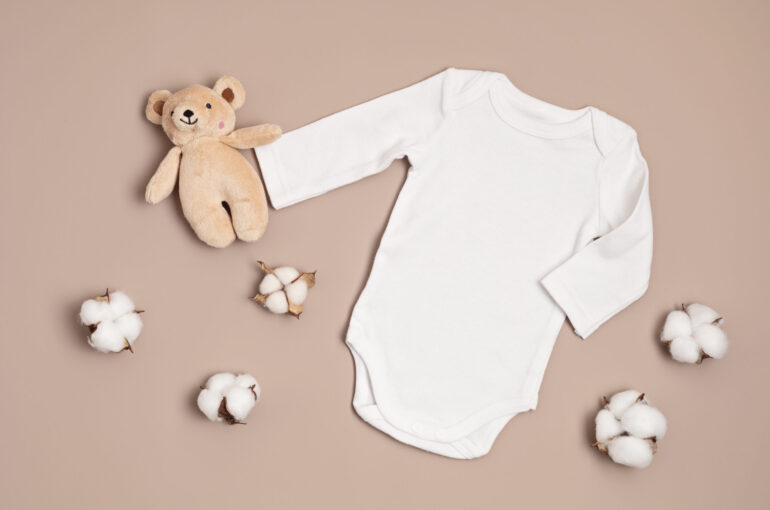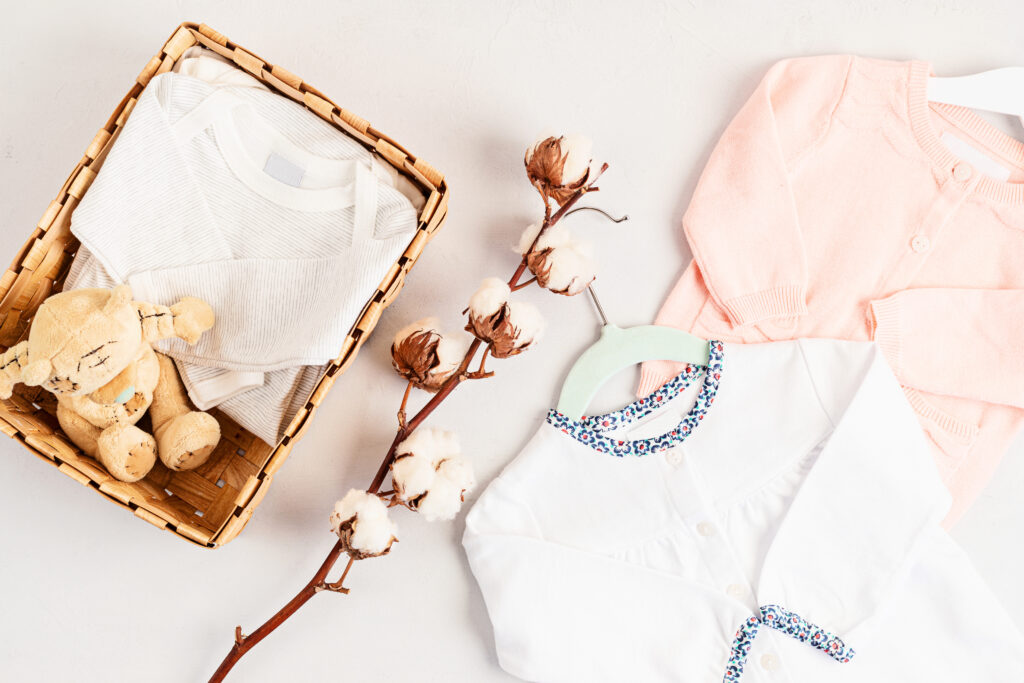Your eco-friendly and safe collection of children’s and baby clothing from Rascal Industry
Your eco-friendly and safe collection of children’s and baby clothing from Rascal Industry

Child safety is the embodiment of the slow fashion concept.
Contents:
- Children’s clothing production: child-safe materials
- What should a baby or child be dressed in? Which clothes are safe for youngsters?
- Why is it important to choose safe materials?
- Which materials do we recommend and offer for the production of clothing for children and babies?
- Linen children’s clothing
- Bamboo children’s clothing
- Organic cotton children’s clothing
- Hemp children’s clothing
- Prohibited elements of children’s clothing
At Rascal Industry, our mission is to distribute safe children’s clothing that has been manufactured in accordance with applicable standards and requirements. Our company’s value chain is based on quality, trust, being local, as well as on ethical and sustainable fashion. That’s why we offer comprehensive production of eco-friendly clothes that are safe for children and babies. Our clothes are made in a Polish sewing room using safe, certified materials from trusted suppliers.
Children’s clothing production: Child-safe materials
The delicate skin of children and babies is sensitive to the environment and so requires special care. That’s why the materials that the products that come in contact with a child’s skin – such as clothes – are made of are important. Every year the Office of Competition and Consumer Protection in close collaboration with the Trade Inspectorate check to make sure that the products available on the market don’t pose a risk to the environment, health or life of young consumers. Unfortunately, they continue to find various irregularities, such as the product label showing „100% cotton” but tests showing that the manufacturer is lying. Polyester, viscose or nylon, which may cause irritation and chafing, show up when the composition is examined. This is why it’s also good to check the process by which clothes are made as well as customer confidence.
What should a baby or child be dressed in? Which clothes are safe for youngsters?
The best baby and children’s clothes are made using natural materials that are safe for delicate skin and have the least plastic additives possible. It’s worth also checking the finishing elements of the product, such as press studs or cords, which should also not be dangerous.
Why is it important to choose safe materials?
Safe materials for children’s and baby clothing are ones that meet the criteria for the composition of chemical compounds and the permitted level of their emission. Children’s and baby clothing made using materials that don’t meet safety standards can have a negative effect on young bodies. The chemical compounds contained in some such materials may be carcinogenic or mutagenic, cause eczema, cause poisoning and lead to disorders in mental and psychomotor development.
In addition, young mums are well aware that the quality of a safe material ensures that the product is durable and resistant to constant washing. Thanks to this, the clothes will still look beautiful and can be worn even after lots of washes.
Textile products, such as children’s clothing, are inspected by the Trade Inspectorate for safety, correct labelling and quality of the textiles. Furthermore, as part of verifying the safety of children’s products, the use of various types of cords and decorative elements in clothing is checked.
Which materials do we recommend and offer for the production of clothing for children and babies?
What should make a collection of baby and children’s clothing stand out? Clothing for youngsters must ensure full freedom of movement, be pleasant to the touch, and not cause discomfort or irritation. First and foremost, it must be safe for young, delicate skin, meaning it must be made of the right materials produced in an environmentally friendly manner without the use of toxic substances or chemical products, such as pesticides and herbicides, that are harmful to people and nature.
The eco-friendly materials we use in the production of children’s and baby clothes stand out thanks to their hygroscopicity and breathability, and do not cause allergies. Are you creating a children’s brand? Find out why linen, bamboo, organic cotton, hemp and entrusting Rascal Industry with the production of children’s clothing are the best choice for your brand.
Linen children’s clothing
Children’s and baby clothes made of linen have a range of unique properties. This naturally derived fibre is safe for young, sensitive skin and is also pleasant to the touch. It’s durable and resistant to washing out.
Sew a children’s collection made of gentle linen with us
Why is linen the perfect material for children’s and baby clothing?
- It’s hygroscopic, meaning it’s excellent at absorbing moisture,
- it’s gentle on the skin, doesn’t cause allergies,
- it’s naturally sun protective,
- it’s extremely airy,
- it has bacteriostatic and bactericidal properties,
- it becomes softer and more pleasant to the touch over time,
- it’s not prone to static.
Children’s and baby clothes made of bamboo
Bamboo clothing is extremely pleasant to the touch and perfect for children and babies. Because no chemical substances are used in the production of bamboo, this eco-friendly fabric has become known as a material that’s 100% safe and friendly to young skin.
Sew a children’s collection made of gentle bamboo fabric with us
Why is bamboo the perfect material for children’s and baby clothing?
- It ensures thermo-regulation,
- it’s anti-allergenic,
- it has anti-fungal and bactericidal properties,
- it eliminates unpleasant odours,
- it’s hygroscopic,
- it protects against UV radiation.
Children’s clothing made of organic cotton
Organic cotton is safer than conventional cotton, as conventional cotton production often uses chemical products that are harmful to people and the environment. Organic cotton is free of pesticides and herbicides, and is also one of the most child-friendly materials.
Sew a children’s collection made of organic cotton with us
Why is organic cotton the perfect material for children’s and baby clothing?
- It’s resistant to abrasion, ripping and frequent washing,
- it’s anti-allergenic,
- it’s thermo-regulating,
- it’s pleasant to the touch,
- only safe products and dyes are used in production,
- it’s more durable than regular cotton.
Hemp children’s clothing
Hemp is an excellent knit for eco-friendly children’s clothing, and it stands out thanks to its environmentally friendly production and unique properties. Hemp clothing is very lightweight and pleasant to the touch.
Sew a children’s collection made of extremely light hemp with us
Why is hemp the perfect material for children’s and baby clothing?
- Er ist ein natürlicher Stoff und ist frei von Pestiziden und Herbiziden
- It’s natural, and free of pesticides and herbicides,
- it’s breathable, is great at wicking moisture, doesn’t absorb odours, and is anti-bacterial,
- it’s resistant to UV radiation,
- it’s one of the most-durable natural textiles,
- it’s easy to dye, and doesn’t fade or cause staining,
- it doesn’t pill or shrink.

Prohibited elements of children’s clothing –
what to avoid in children’s clothing to ensure safety for youngsters.
The finishing touches on kids’ clothing are just as important as the material the clothing is made of. Regulations precisely specify the allowed sizes and appearance of different types and location of decorative elements, belts and cords to minimise the risk of choking or catching.
According to the Office of Competition and Consumer Protection, the most important rules are:
- clothes for children up to 7 years old may not have drawstrings around the head and neck,
- drawstrings around the head, neck and upper chest in clothes for children aged 7 to 14 shouldn’t have free ends,
- cords may not hang below the lower edge of the garment,
- free ends of cords should not have knots or 3D embellishments, and should be protected against fraying,
- drawstrings should be affixed to the garment in at least one point.




